Growing edible physalis: planting seedlings, outdoor care before harvest
Physalis recently became an invited guest at summer cottages and already compares favorably with other nightshades. Firstly, it seems to fascinate with the look of its paper lanterns (decorative form), and secondly, it is highly valued due to its food qualities (especially the vegetable and berry form, for example, strawberry physalis), and thirdly, it has become quite famous for its medicinal properties. In addition, his care requirements are minimal, and he himself, fortunately, is not a target for diseases and pests.
Therefore, try growing emerald berries or bubble cherries (its popular names) in your summer cottage. And if you want to be satisfied with the quantity and quality of physalis plantings, or just to keep your seedlings healthy, listen to our advice and recommendations for proper planting!
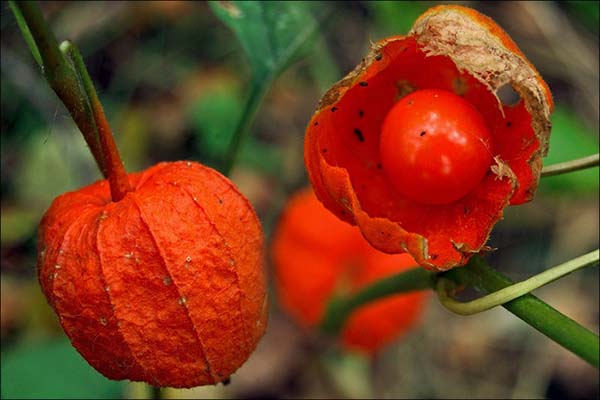
Content
- 1 Features of growing physalis seedlings
- 2 When and how to plant physalis seedlings
- 3 Physalis care after sowing seedlings
- 4 We plant physalis seedlings on a garden bed in open ground: timing and agricultural technology of care
- 5 When to harvest physalis and how to store it
- 6 The specifics of growing and caring for physalis in the Urals and Siberia
Features of growing physalis seedlings
If you are puzzled by the problem of growing physalis seedlings, then the first step is to decide how you will grow it: independently from seeds, or simply buy ready-made seedlings in a specialized store.
The most popular and loved by many gardeners varieties of berry and vegetable physalis:
- Strawberry;
- Confectioner;
- Plum jam;
- Pineapple.

The reason for self-cultivation of physalis is that you yourself will be able to assess the "profitability" of a particular variety, and also decide how many pieces you will pull at your summer cottage. And you will also have to schedule the timing of sowing and planting in open ground. At the same time, do not forget that not only the sun affects plants, but also the moon. Therefore, if you want to protect your planting from unnecessary stress, use the lunar calendar.
Like any garden crop, physalis has differences in terms of technical ripening depending on the variety (from germination to full ripening):
- early - 90-110;
- mid-season - 110-130;
- late - up to 150-160 days.
Video: edible and decorative physalis
When and how to plant physalis seedlings
As you might guess, spring frosts are far from the best for a plant. And physalis seedlings also need more heat and light than most of the climatic zones of Russia can give, especially at the dawn of life. That is why physalis is grown precisely through seedlings.
The optimal time for sowing seeds for seedlings in the Middle lane (Moscow region) is second half of March until mid-April... In this case, you manage to plant 40-50 day old seedlings in open ground in May.
In order to know more precisely the date of sowing physalis, it is recommended to count this period and add 7-9 days for seedlings from the time when the frost in your region finally disappears. This will affect early ripening varieties in the second half of April, mid and late ripening - in late March - early April.
Earlier planting dates for physalis, in early March and even at the end of February, are not encouraged, since the plant is characterized by rapid growth rates, and young seedlings of seedlings are too fragile and brittle. On top of that, they are intertwined. So, if you dream of an impressive harvest, but with a minimum of effort and money, then it is better to plant more bushes, but a little later.
Video: timing and sowing physalis with germinated seeds for seedlings
According to the lunar calendar in 2021
According to the lunar calendar for 2021, auspicious days for sowing physalis seedlings are:
- in February - 6-8, 14-20, 28, 29;
- in March - 4-8, 12-14, 26-29;
- in April - 1-7, 9-11, 24, 25, 27-30;
- in May - 2-4, 6, 9-12, 15-20, 25-29;
- in June - 2-4, 7-9.
The gardener does not always have the opportunity to sow within the specified time frame, but there areunfavorable daysin which it is strictly forbidden to conduct sowing physalis for seedlings, and these periods (days of the Full Moon and New moons, as well as the period when the Moon is in Aquarius, because it is a barren and dry sign -italicized) it is also necessary to consider:
- in February -10-11, 27;
- in March - 9-10, 13, 28;
- in April -5-6, 12, 27;
- in May -2-4, 11, 26, 30-31;
- in June -10, 24, 26-27.
Capacity and soil for sowing physalis
Currently, several options for sowing are relevant, and in this situation it is better to focus on the size of the container for planting: in small individual ones - you don't need to lay a lot, 2-3 seeds are enough. This applies to peat tablets, "snails", seedling pots, plastic cups, yoghurt containers, sour cream, etc. But it is worth planting more seeds in massive wooden or plastic boxes. True, then their picking will be needed.

For sowing, of course, it is much easier to use ready-made soil, for example, for eggplants and peppers or tomatoes. And it is not a sin to find the time and make the potting soil with your own hands. To do this, mix the following components:
- 4/9 peat;
- 2/9 humus (rotted compost is allowed);
- 2/9 garden or turf land;
- 1/9 of the washed river sand.
Now you need to sift the resulting mixture, and to reduce the possibility of fungal diseases and the number of weeds, you need to steam it for 60 minutes.
Seed preparation and treatment before planting
Prior to sowing physalis seeds, it is reasonable to focus on treating diseases and pests. To do this, it makes sense to use a richly pink solution of potassium permanganate (holding time - 20 minutes) or a fungicide solution, let's say, "Maxim" loved by summer residents, "Fitosporin", "Vitaros". The reasons for worry will disappear if you keep the physalis embryos all night in the Epin solution (1-2 drops per half a glass of water), and then dry them.
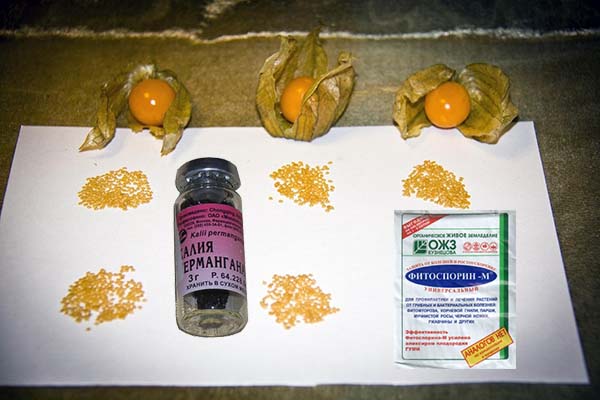
We plant seeds for seedlings
The best sowing option is to evenly distribute the physalis seedlings over the surface of the soil with a piece of paper, slowly throwing off the seeds from its corner. Then pour 1 cm of the same soil substrate on top, and then compact it slightly so that the earth does not erode and the seedlings do not appear on the surface during watering.
Now you can remove the physalis seedlings in a light and warm (not lower than + 16 ° C) place. It is incredibly important that the soil does not dry out, but the crops should be spilled very carefully, along the edges of the planting container, in small portions.
Important! If it happens that the ground is very dry, do not flood the seedlings. It is wiser not to add a lot of water at once, but little by little, with breaks of 2-3 hours.
It is in your best interest to cover the crops with glass or plastic wrap to better retain moisture and put them back in a bright place. Physalis rises in about a week. Then the shelter can be removed.
Physalis care after sowing seedlings
As the seedlings grow, it is recommended to feed them every 14-17 days with an easily soluble fertilizer for seedlings (such asFertiki, Agricola or Solution).

It is equally important to periodically turn the seedlings towards the sun for more even growth.
Picking
Physalis seedlings dive in the phase of 2-3 true leaves.
It is better and easier to take the same soil mixture as when sowing seedlings, but with half the sand. To optimize the process, 2 tbsp is simply poured onto 10 liters of soil. l of a complete nitrogen-phosphorus-potassium fertilizer (such as nitroammofoska).
Next, the planting containers are filled with a substrate and lightly tamped.
Then pits are made of such a size that the seedlings can be buried to the cotyledonous leaves.
Excessively long roots should be trimmed and shortened slightly. Fear not, this procedure only stimulates the formation of even stronger roots that can draw moisture from the depth of the pot.
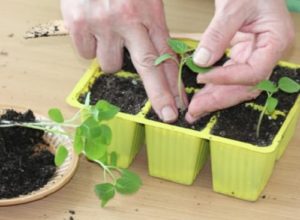
Next, the soil around the seedling is compacted and spilled abundantly along the edges of the planting container.
If it turns out that the soil after irrigation is overly sunk, then more soil is poured into the physalis seedlings from above so that it does not reach the edge of the planting container by 2-3 cm.
At the end of the picking, the seedlings are placed for 24 hours on the floor or on the western window, in other words, in the shade. After the lapse of time, they are again transferred to a warm and bright southern window.
Video: picking physalis seedlings
Leaving after a pick
As for the care of physalis seedlings, due to the warming of the climate, it happens that the air temperature rises sharply, and the ruthless sun actually burns the defenseless plant. In such cases, it is recommended to use thick paper such as parchment, reflective paper, or even newspaper (better than nothing). Some avid summer residents blind the windows with tulle. Be that as it may, but the curtains on the windows are clearly not enough to absorb the bright sunlight.In addition, you have to monitor the free air exchange between the plant and the window, otherwise the situation becomes fraught with an even greater increase in degrees. It is much more effective, moreover, more aesthetically pleasing, to use fabric roller blinds (a kind of blinds) or aluminum blinds. In the case of the latter, only diffused light reflected from the blinds themselves will fall on the seedlings.

In extreme cases, you can rearrange containers with seedlings in the depths of the rooms. It is better to let them stand in the dark, and their leaves rise up than they overheat and "burn out".
Considering that in the heat, the land is often waterlogged, and as a result, it can develop blackleg, it is recommended to spill plants with a solution of a biological product Fitosporin... In addition, in order to reduce the stress level of seedlings, it is not for nothing that gardeners - practitioners use the Epin solution to spray physalis with a spray bottle.
Evidence that everything is fine with physalis will be the blooming of young leaves. The reason for watering the condition of the lower leaves can become, which, due to a lack of fluid, can lose turgor (elasticity). Watering is necessary 1-2 times a week, with lukewarm water + 20-22 C, and abundantly enough. The growth time of physalis seedlings is 1 month and, as a rule, no additional feeding is needed for a strong growth. But if physalis takes root rather slowly, then 8-10 days after the pick, it is fertilized with any complex fertilizing such as Fertika Lux (1 tbsp. L. Per 10 l of water).
Video: growing physalis seedlings - planting and care
Planting physalis seedlingsto the gardenin open ground: timing and care agrotechnology
It has been proven for years that physalis seedlings are required well temper... To do this, it is periodically taken out to the balcony or loggia, constantly increasing the time (no more than a day). As soon as the time of frost has passed, physalis is transferred to open ground. The soil is needed not acidic (liming is carried out in advance to deoxidize it), dug 25-28 cm and fertilized (100 g of nitroammofoska per 2 meters of beds). For all its undemanding soil, physalis will not be indifferent to adding a couple of handfuls of good humus to the planting hole.
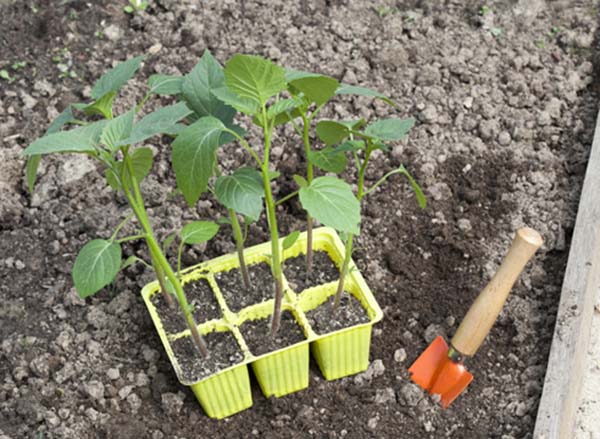
Good for nothing if the predecessors physalis are tomatoes, peppers, eggplant or potatoes: they are exactly the same diseases and insect enemies.
As for the ideal planting site, physalis hates stagnant moisture in the soil and, in contrast, prefers dacha plots that are flooded with sun from morning to evening. Moreover, he does not tolerate weeds, which must be removed, as they say, tirelessly.
The spacing of the holes is recommended to be done at a distance of 70 cm for all types, except for berry (Peruvian), for which 40-60 cm is best, and for vegetable (Mexican) physalis - 80 cm.
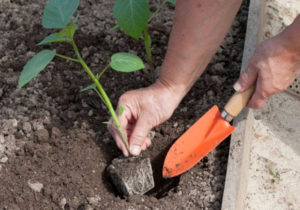
Step-by-step instructions for planting physalis seedlings in open ground:
- Remove the seedlings from the planting container or glass, trying to keep the earthen lump intact.
- Deepen the plant into the hole up to 1 true leaf.
- Cover the hole with soil with a slight compaction around the periphery.
- Water abundantly and mulch with peat (from crusts when watering).
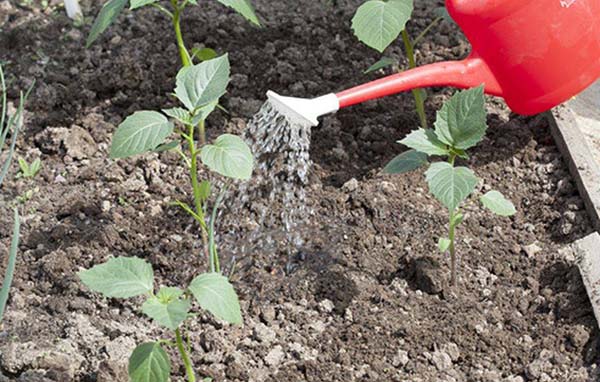
Video: planting vegetable physalis seedlings in the ground
How to care for physalis in an open field
Summer residents who are thinking about proper care for physalis recommend tying up a plant, for example, Mexican varieties with shoots 1.5 m long.
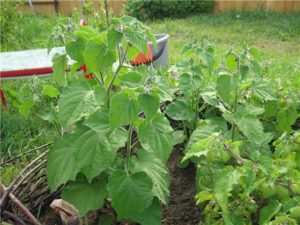
Also don't count as extra fuss loosen and huddle soil after watering the plant.
It is unlikely that you will be surprised by the need for physalis every 14 days in top dressing. A weighted solution is to first carry out organic feeding with mullein infusion, and then with mineral fertilizer dissolved in water.
Besides, the meaning is quite clear pinches physalis closer to autumn: limit the growth of deciduous mass and accelerate the process of fruit ripening.
When to harvest physalis and how to store it
The visual signs of fruit readiness are their dried orange-red lantern boxes and a specific berry-vegetable aroma.
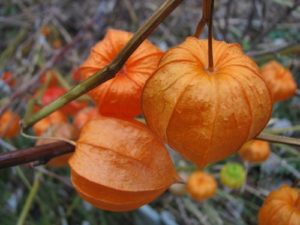
One way or another, physalis is recommended to be picked a little unripe and directly from the branches of the bush (this way it ripens better). Then, without tightening, remove the flashlight covers and let the fruits dry. Otherwise, the safety of juicy fruits is not guaranteed.
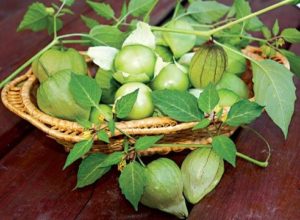
Physalis usually ripens by the end of August. Fruit ripening occurs gradually, starting from the bottom of the bush. Physalis is best picked in clear and sunny weather. First, all that came in and were fully ripe, and then - still unripe green. The collected berries must be dried well.

The ideal place for storing physalis is dry, well-ventilated and cool and indoors. Packaging - lattice boxes. The optimum storage temperature is 12-14 degrees, so the fruits can lie for 1-2 months. Unripe berries can be preserved until spring. But if you keep physalis at room temperature, the berries will quickly deteriorate, wither and rot. During the entire shelf life, physalis must be constantly and regularly reviewed, selecting ripe fruits and throwing out the spoiled ones. Thus, if you want to keep a vegetable wonder for a long time, then create comfortable conditions for it.
Video: cleaning and storing physalis
The specifics of growing and caring for physalis in the Urals and Siberia
Physalis is also well known in Siberia and the Urals. Due to the harsh continental climate, it would seem impossible to grow such a thermophilic plant, because spring frosts are in no hurry to go away sometimes until the first half of June, and autumn ones keep gardeners in suspense until the end of August. Therefore, if you have not yet acquired a greenhouse or there is not enough space for a plant in it, then do not suffer and focus on early ripening varieties. A proven method of growing physalis in Siberia and the Urals is to plant seeds for seedlings in April, and towards the end of May to take out the sprouted shoots under a temporary "greenhouse" shelter, and not immediately plant them in open ground. It is not costly to make it: set arcs over the garden bed, and put agrofibre or film on them. In the second half of June, the structure can be dismantled and, if necessary, rebuilt at the end of August. Do not miss the moment that it is advisable to close the seedlings at night and open them during the day.

In addition, so that the soul does not ache for poor seedlings, you can leave it on the loggia or closed balcony, veranda until the frost leaves (it turns out about 50-60 days). For such a period, you cannot do without 2 picks. The second will be needed if the seedlings have already greatly outgrown the planting capacity, and before transplanting it is still in the region of 2 weeks. Physalis seedlings, grown in the Urals and Siberia, respond well to feeding: the first should be carried out 7 days after the pick. Further, with an interval of 9-11 days, but the last must be done 7 days before disembarking in open ground.
How can a keen summer resident manage on his 6 acres without such a plant as physalis? Indeed, in addition to the pleasure of contemplating a curiosity at your site, you get the opportunity to enjoy the specific aroma of its fruits and the special culinary qualities of dishes from it (which is not a glamorous delicacy from the highest cuisine). So don’t refuse - take the best of our recommendations to achieve excellent seedling quality for sure, and then an impressive harvest.
Video: everything about growing vegetable physalis - from sowing seeds for seedlings to harvesting

